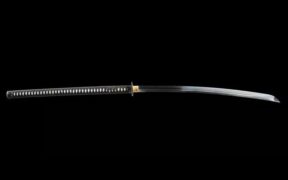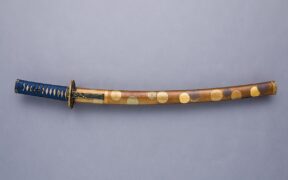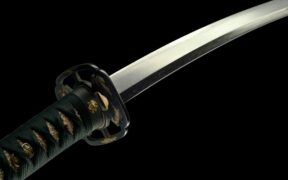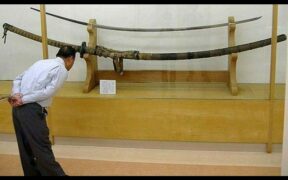Our content features commercial links to our products, committed to transparent, unbiased, and informed editorial recommendations. Learn More
Naginata: The Japanese Polearm Sword
NO AI USED This Article has been written and edited by our team with no help of the AI
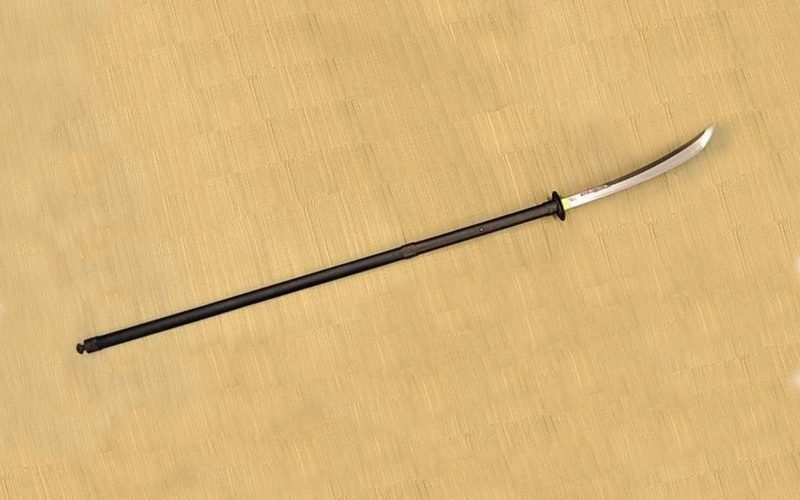
The Japanese Naginata is a curved one-edged sword mounted on a pole. It is a Japanese weapon that is often seen as a polearm or a spear that could possibly beat the Katana.
In this article, we will open up with the Naginata types. Then we will go over its most visible characteristics and how to best use them. Finally, we will describe the Naginata Swords’ history and answer some of the most frequently asked questions.
Types of Naginata Swords
Most of these swords are categorized into different types and classes. This is because of their size, blade, and, surprisingly, if the swords are used by males or females. The two main types of Naginata are Konaginata and Onaginata.
Konaginata
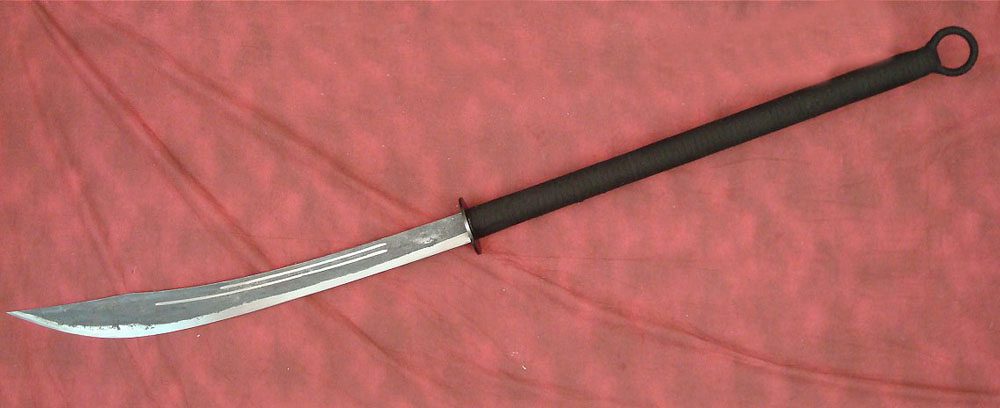
The Konaginata is a pole sword, where the length of the handle and the blade are similar. The handle can be around 31.5 inches (80 cm) long, while the blade will be 25.6 to 27.6 inches (65 to 70 cm) long. This Naginata looks like the Nagamaki sword.
These Naginatas aren’t very long, and this trait prevented them from being used a lot. That’s why it is very hard to find. However, there are still some available online, though they are rare.
Onaginata
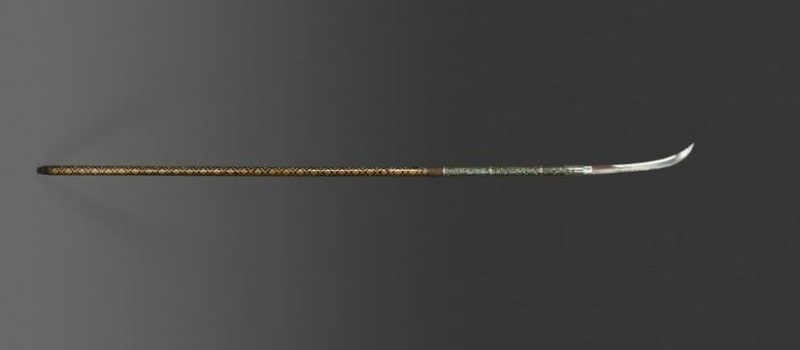
The Onaginata is the long Naginata sword. This type can go up to 9.8 feet (3 meters) in length. Usually, these were used a lot in big battlefields because of their extensive reach. They were also much heavier than the regular Naginata sword.
Double Edged Naginata
It is unknown whether these swords were really used, but some historians say that the Japanese monks most likely used them for performance acts. The double-edged Naginata has two blades. One is on one side of the handle, while the other blade is on the opposite side.
Shizuka Gozen & Tomoe Gozen
They are the same types of Naginata swords. The only difference is that one is meant to be used by males and the other by females.
- Shizuka Gozen – female users
- Tomoe Gozen – male users
Characteristics of the Naginata Sword
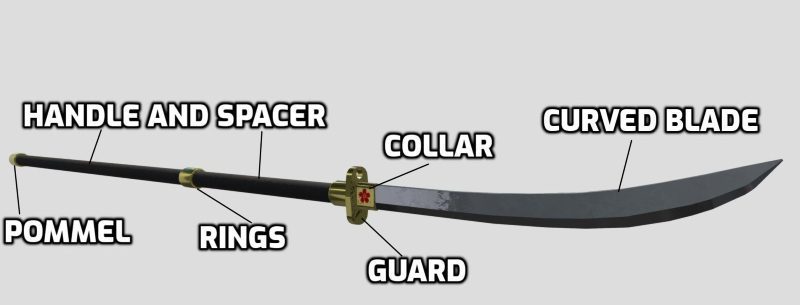
Naginata in Japanese can be directly translated as a mowing hatchet or tool. It is exactly what the sword looks like too. Long, slim, and made for very powerful slashing/mowing strikes.
Blade
The Naginata can be considered part of the sword family mainly because of its blade. The Naginata blade is made the same way as the Katana. However, it is a wider version of the Katana blade and has a slight curve.
It is wide and very long. The total blade length of the Naginata sword can be 11.8 to 27.5 inches (30 to 70 cm) long. The blade is one-edged, meaning that it is sharpened and can be used for striking from one side only, but it also has a very sharp point for thrusting.
The Naginata has a full tang blade. It means that the actual steel of the blade starts from the pommel of the wooden shaft. This gives it much more strength and is less likely to break.
Guard
Even though it is very hard to see, the Naginata sword does have a guard (tsuba). It is a round and circular shape and is very small.
This type of guard isn’t really for protecting the user’s hands, but it allows for a better grip when holding and using this long sword.
Shaft or Handle
The handle length of the Naginata can go from 3.9 to 7.8 feet (120 to 240 cm) long. A very long handle allows for a bigger range when attacking from afar.
The handle is usually made of wood. It is very light and sometimes wrapped with a material that makes it easy to grip. It is mainly for use with both hands.
There are a few rings (Semagane in Japanese) across the handle, which offers a better grip. A peg holds the handle together with the full tang blade.
Pommel
At the beginning of the shaft, the Naginata has a metal pommel. This is connected to the full-tang blade and provides sturdiness and strength to the whole shaft.
Scabbard
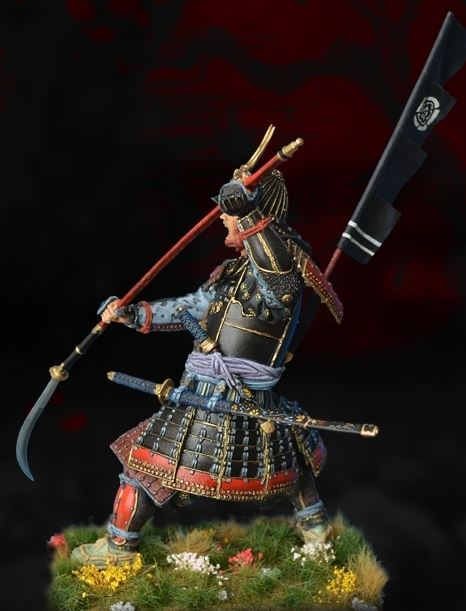
As long as this sword is, it still has its own saya (Japanese word for scabbard/sheath).
This scabbard is usually made of wood. The saya is light and is only placed on top of the blade of the Naginata. This type of scabbard is usually only worn when the weapon is not in use. Otherwise, taking it out before a fight would be too hard.
Length & Size
The overall length of the Naginata can range from 4.9 to 9.8 feet (150 to 300 cm). It is a very long sword that is often described as a polearm. The sizes of the historical and modern Naginata differ mainly because of how easy they would be to use.
- Modern solid wood Naginata – Shortest (max 6.5 feet / 2 meters)
- Modern wood/bamboo Naginata for practice – Medium (up to 7.5 feet / 2.3 meters)
- Traditional steel Naginata – Longest (up to 9.8 feet / 3 meters)
The modern Naginata you will most likely find online is around 6.8 to 7.4 feet (2.1 to 2.25 meters) long.
Weight
The weight of the Naginata is usually from 3.3 lbs (1.5 kg) to a total of 7.7 lbs (3.5 kg). This varies mainly because of the size of the Naginata, which can be very different. Also, it depends on what type of material the handle and blade are made from. It will be around this weight if it is made from a high-carbon steel blade. But if it is a prop sword, it shouldn’t be under 1.3 lbs (600 grams).
It isn’t a very heavy sword for its size. Still, it is much heavier than the casual sword. This extra weight allows for much stronger and deadlier attacks but can negatively affect your stamina.
Curvature
The Naginata sword has a curvature also seen on the blade. The long pole and shaft aren’t curved. However, the curvature only starts at the blade and curves more toward the tipping point.
This curvature allows for deadly slashing strikes but could also be used for thrusting because of its sharp point.
Uses of the Naginata Sword
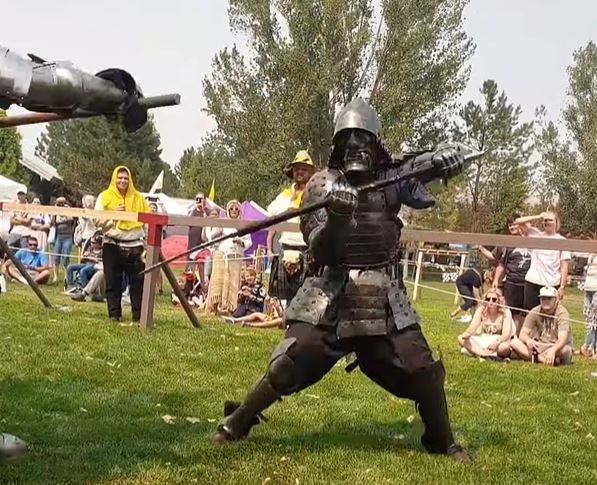
This samurai sword has the ability to hit, puncture, or even hook an opponent, but because its center of mass is fairly balanced, it can often be spun and turned to cover a large area. The curved blade gives the weapon a long cutting edge too.
It is a very long sword that will give you a much longer reach than a regular sword, but when using it, you may think it is more of a polearm. It has a single-edged blade that is narrow and heavy, so people who use it can defy gravity to make hard, deadly, and unpredictable strikes.
Martial Arts & LARP
Naginatajutsu is the name for the art of fighting with a naginata. Most naginata practice today is a modernized form called Atarashii Naginata, which is a Gendai budo (Japanese martial art for wrestling). It is arranged into regional, national, and international federations that organize competitions and give ranks.
The Bujinkan (another type of Japanese martial art) and some Kory schools, like Suio Ryu and Tend-Ryu, also teach how to use the Naginata. All of these martial arts that use the Naginata are associated with Ninjutsu.
The Naginata is seen in almost every Japanese LARP match and is very effective in real or cosplay matches. It is a sword that is loved because of its length. It is also seen in many anime and movies alike.
Is it a Beginner Sword?
The Naginata is used in many Japanese martial arts, but it is a very long sword for a beginner. This length might become a problem for beginners as you might lose your grip or be unable to find the perfect balance.
As it is long and heavy, the Naginata doesn’t need a lot of lunging, jumping, or weight shifting to be used well. It is a weapon that could be used effectively with small, simple moves, but it will take time and a lot of sparring practice to learn.
What to Look out for When Looking for a Naginata Sword Online
Screws.
Since it is a long blade and well-known, many scammer ‘swordsmiths’ will try to sell a Naginata. To be able to withstand the length of the shaft and the blade, they will use screws to hold it all together. Unfortunately, this is a fake and not a good quality Naginata.
The high-quality and real Naginata has a full-tang blade. This means that the blade starts from the pommel and is inside the shaft, then broadens towards the end. That is why the original Naginata is very sturdy and won’t break when using it.
History of the Naginata Sword
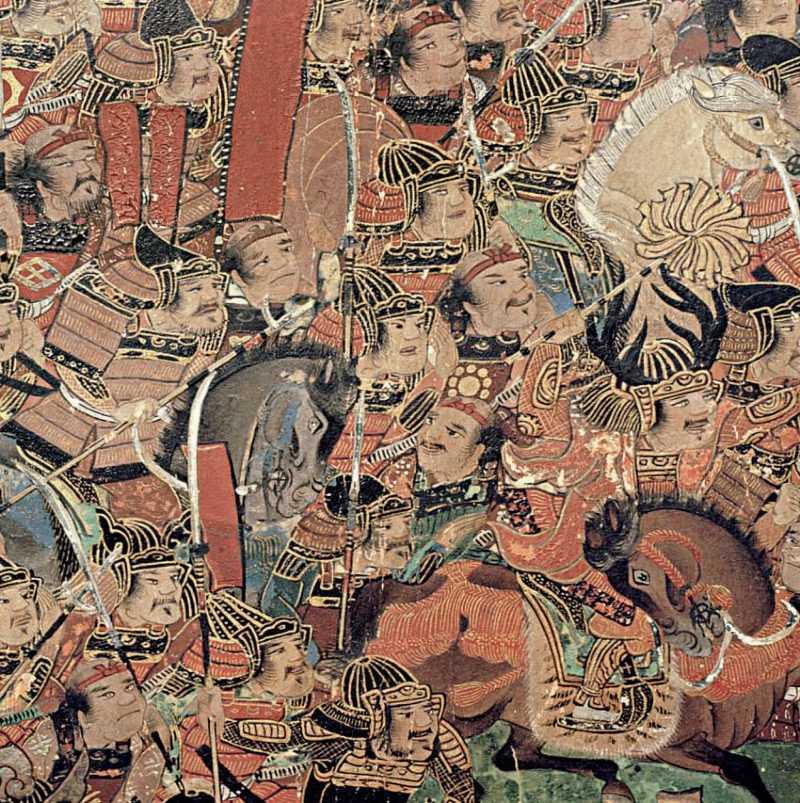
The Naginata is a Japanese sword used throughout Japan’s medieval years.
It is known that warrior monks used it around the year 750 A.D. However, it became popular for the first time during the Kamakura period, which lasted from 1192 to 1333. This was a feudal time that could be thought of as a Renaissance for Japan’s warrior class.
The Naginata was popular on the battlefield because it was useful in many ways. It was mainly used by Japanese foot soldiers in melee fights. This long and wide sword could hold the front lines while the archers did their damage from afar.
During the Nara and Heian periods, monk soldiers used this weapon to protect their temples. During the Kamakura and Muromachi eras, it was the weapon of choice in battles.
After the Onin War, Ashigaru (foot soldiers) were used to fight up close, and when the matchlock (Tanegashima) gun came out in 1543, it made the Naginata much less common on the battlefield. As battle strategies changed, the Yari (Japanese spear) replaced the Naginata as the preferred pole weapon.
Origins of the Naginata Sword
There are three theories of how the Naginata sword came to be.
- Chinese halberds, called Guan Dao, were brought to Japan by the first people who moved there, possibly around 200 BC. Some historians also think that the Chinese may have made the weapon, and the Japanese improved upon it.
- After metal was brought to Japan around 200 BC, the Naginata was immediately made as a weapon.
- The Naginata started as a simple chopping tool used on farms. Then, at the beginning of the 3rd century BC, Japanese farmers put sharp stones on the end of long wooden shafts. After a while, they started using metal.
Is the Naginata a Female Sword?
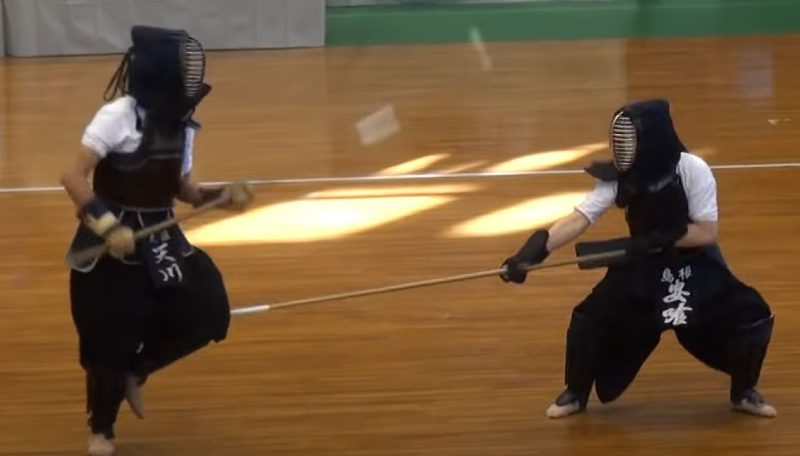
The Naginata sword can be used by both males and females alike. However, it is known as a female sword because this deadly weapon was used during the difficult period of the Warring States in Japan, where it became the savior for most women. This period was filled with pillaging, slaughter, and raping across the land. To save themselves from the possible torture, many women committed mass suicides using poison.
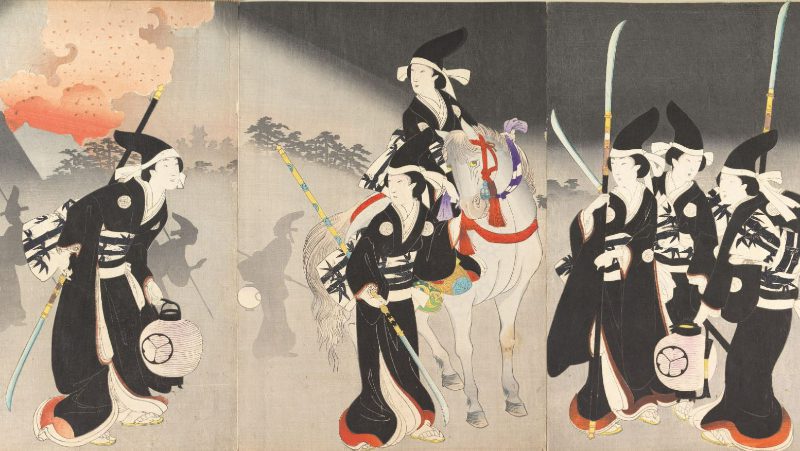
But some women didn’t. Instead, they took the longest and sturdiest sword that could hold both the front and backline when needed. This was the period when Japanese samurai women started using the Naginata.
Some historical scripts state that strong female warriors with a naginata might keep everyone at bay but the greatest fighters.
It is a female sword mainly because when the Katanas were banned in Japan, the Naginata came about as a female martial art.
Is the Naginata a Sword, Spear, or Glaive?
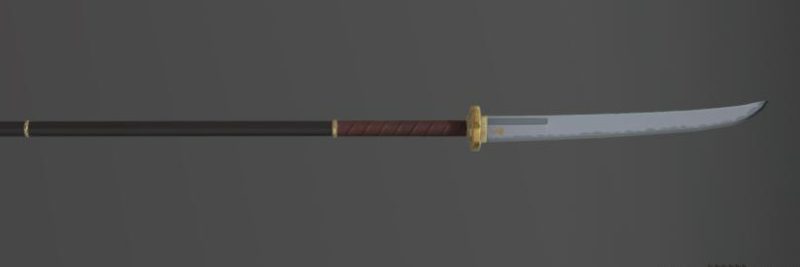
The Naginata is a Japanese pole sword. The only thing about this sword that could be confusing is its long shaft/handle. The blade is made the same way as the Katana sword, with the same curve but slightly wider.
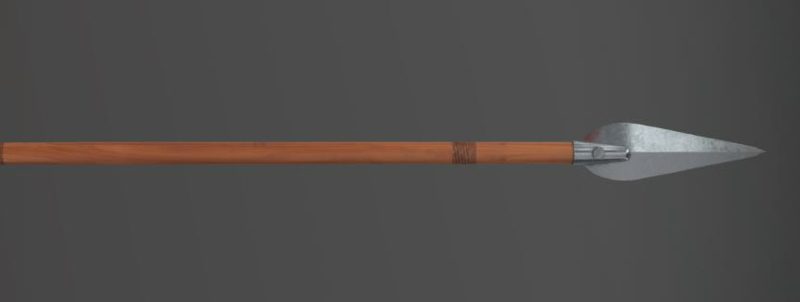
The spear, on the other hand, is a weapon that is also very long but mainly for thrusting. It is a weapon meant to be used when holding a front line side by side with others. The Naginata can be used to attack by slashing and thrusting from many angles.
The Naginata can only be compared to the glaive or polearm. The biggest difference between them is their weight. The Naginata is a lot lighter than the usual European glaive. That’s why it can be used as both a sword and a polearm.
Naginata vs. Katana
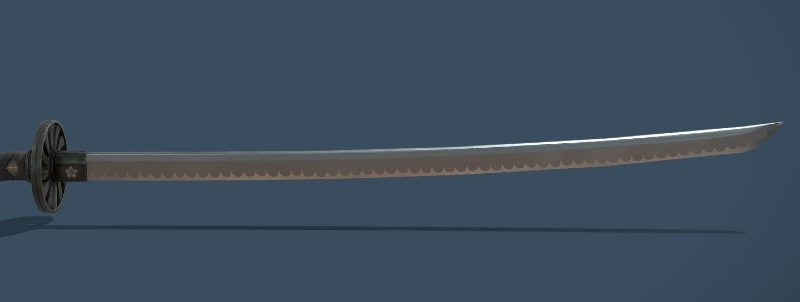
The Naginata is one of the deadliest Japanese weapons in the hands of a professional user.
The Naginata worked very well against the famous Katana swords. A master of Naginatajutsu, or the art of using a Naginata, could kill multiple Japanese samurai swordsmen with just a few well-placed arm swings.
A lesser-known fact is that the Katana wasn’t actually used all that much. It was mostly a weapon for show that was placed on belts and used as a last resort.
On the other hand, the Naginata was a weapon that could strike at a distance and actually hold the ground or push back entire front lines. Some would even go so far as to say that the Katana is weaker than the Naginata sword.
Naginata vs. Guan Dao

The Naginata is often compared to the Guan Dao because of their similarities.
The Guan Dao is a Chinese polearm. It is larger and heavier than the regular Naginata and has a thicker black shaft and a bigger, curved blade. The Bisento is the Japanese version of this weapon. It is also much heavier and might result in stronger strikes.
The Naginata is much shorter and lighter, which is why it was used more. The lightness offers much more speed with the ability to strike from different angles. It could handle a one-on-one fight as well as big war battles.
Conclusion
The Japanese Naginata is the long pole sword that was highly used by all classes in feudal Japan. It is a very long weapon with both male and female martial art styles. It is said that a person who practices the Naginata is more likely to have a balanced and healthy state of mind and body.
